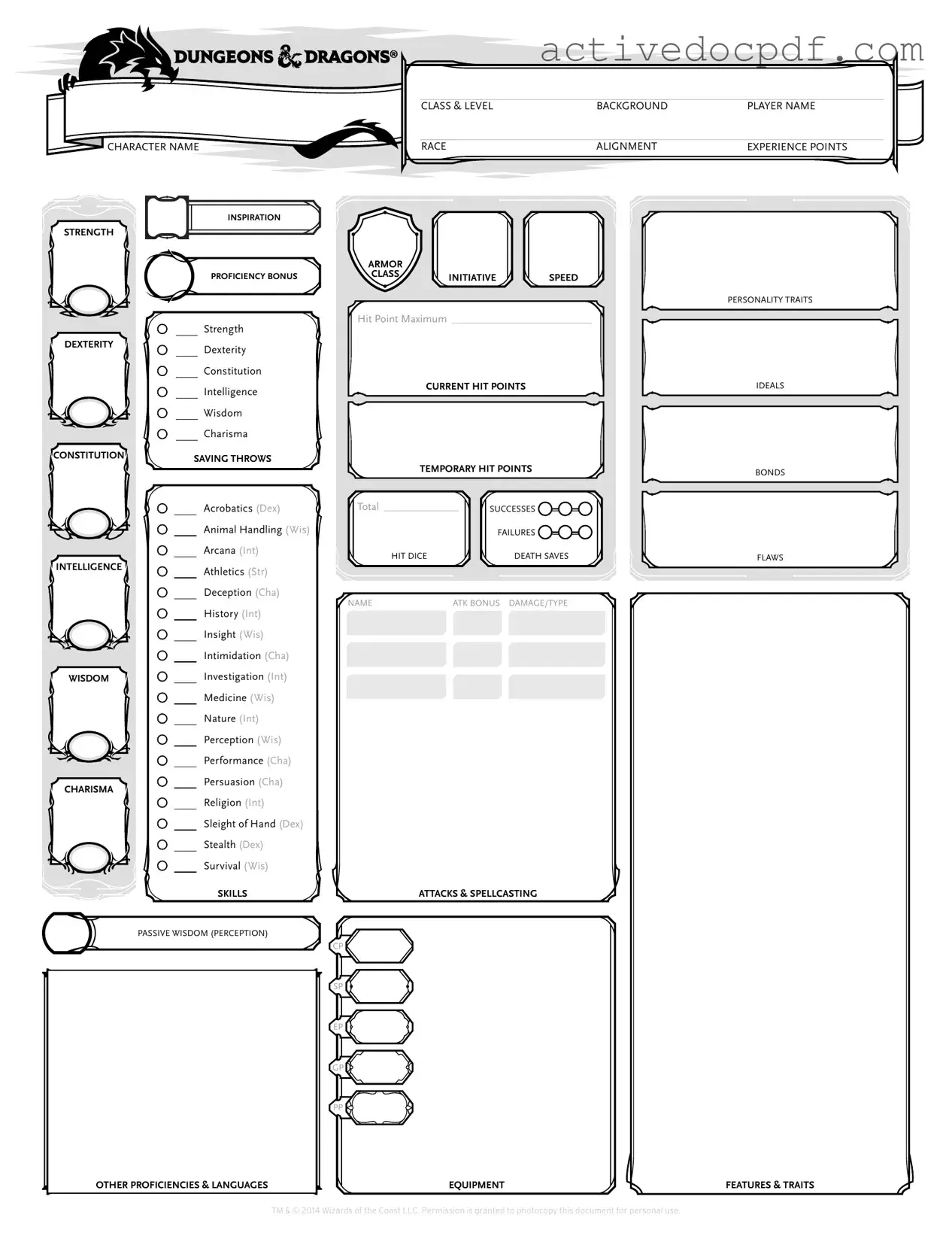What is a D&D Character Sheet?
A D&D Character Sheet is a tool that helps players keep track of their character's abilities, skills, and background. It includes important information such as your character's name, race, class, and level. The sheet also tracks hit points, armor class, and other statistics that are crucial during gameplay.
How do I fill out a D&D Character Sheet?
Filling out a Character Sheet can be straightforward. Here are the steps to guide you:
-
Start with your character's basic information: name, race, class, and background.
-
Determine your ability scores (Strength, Dexterity, Constitution, Intelligence, Wisdom, and Charisma) and fill them in.
-
Calculate your modifiers based on your ability scores.
-
Fill in your character's skills, proficiencies, and equipment.
-
Don't forget to track hit points and any spells if your character can cast them.
Can I customize my D&D Character Sheet?
Yes, you can definitely customize your Character Sheet! Many players prefer to add personal touches or additional notes that reflect their character's story. You might want to include a section for character goals, allies, or even a brief backstory. Just make sure that all essential information is still clearly visible.
Where can I find a D&D Character Sheet?
You can find D&D Character Sheets in various places:
-
Official Dungeons & Dragons websites often provide downloadable sheets.
-
Local game stores usually have printed sheets available.
-
Online platforms and forums may have user-created sheets that you can use.
Additionally, there are apps available that allow you to create and manage your Character Sheet digitally.
What should I do if I make a mistake on my Character Sheet?
Making mistakes is a normal part of the process. If you notice an error, simply cross out the incorrect information and write the correct details next to it. If your sheet is digital, you can easily edit the fields. Just ensure that all players can read the updated information clearly.
